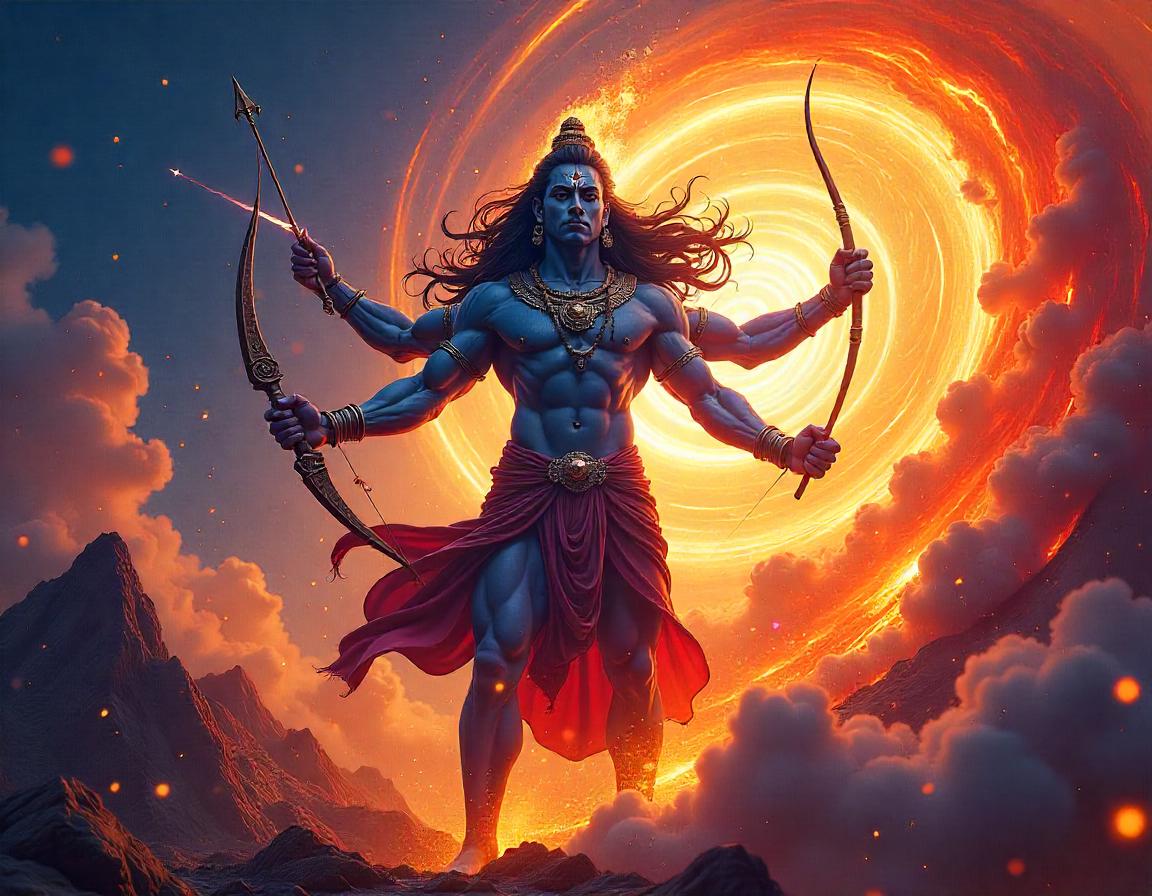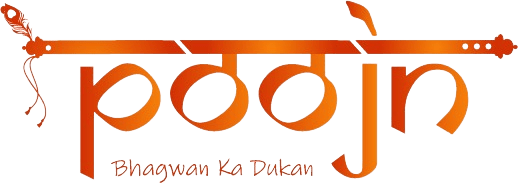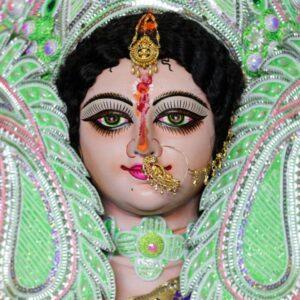
Veerabhadra stands as a powerful and formidable deity in Hindu mythology, revered for his unwavering defense of dharma (righteousness). This article delves into the significance of Veerabhadra, exploring his origins, attributes, worship practices, and enduring impact on Hindu rituals and culture. Embark on this journey to gain a deeper understanding of this revered figure and enrich your appreciation for the traditions associated with him.
Origins and Mythological Background
Veerabhadra’s Creation and Role in Mythology
Born from the righteous fury of Lord Shiva, Veerabhadra emerged to avenge the insult directed towards his consort, Sati, during the Daksha Yagna. The narrative recounts how Veerabhadra, in his wrath, beheaded Daksha, only to later restore him to life. This act powerfully symbolizes the protection of dharma and the destruction of adharma (unrighteousness). The story serves as a testament to Shiva’s unwavering commitment to justice and the restoration of balance.
- Veerabhadra’s fierce appearance embodies his immense power, instilling both awe and reverence. His very presence evokes the strength and determination with which he upholds dharma.
- His iconic weaponry includes the trident (trishula) and sword, potent symbols of his strength and ability to vanquish adharma. These weapons represent his divine authority and his role as a protector.
- Nandi, the sacred bull, serves as his vehicle (vahana), symbolizing unwavering loyalty and immense strength. Just as Nandi serves Shiva faithfully, Veerabhadra remains steadfast in his devotion to upholding righteousness.
Veerabhadra’s connections to other deities within the Shaiva tradition further enrich his significance. His association with destructive power underscores the importance of maintaining cosmic balance, a fundamental principle in Hindu cosmology.
Attributes and Iconography of Veerabhadra
Appearance and Symbolism
Veerabhadra’s physical attributes are laden with symbolism, each detail conveying a deeper meaning:
- Three Eyes: Representing his omniscient nature and ability to perceive all aspects of reality. These eyes symbolize his wisdom and insight into the workings of dharma.
- Fiery Hair: Signifying his intense energy and fiery passion for justice. His untamed hair embodies the raw power that fuels his actions.
- Multiple Arms: Holding various weapons like the trident, sword, and bow, demonstrating his preparedness to combat adharma in all its forms. Each weapon signifies a different aspect of his divine power.
Nandi, the bull, as Veerabhadra’s vehicle, stands for strength and steadfastness. Depictions of Veerabhadra in ancient temple art throughout India highlight his crucial role as a protector of dharma. His fierce demeanor serves as a constant reminder of the importance of upholding righteousness.
Rituals and Worship Practices
Veerabhadra Worship in Hindu Rituals
Veerabhadra is worshipped through various rituals, each expressing devotion and seeking his blessings:
- Special Pujas and Homams: These sacred fire rituals are dedicated to invoking Veerabhadra’s presence and seeking his blessings. The fire symbolizes purification and transformation.
- Maha Shivaratri Festival: This important occasion is dedicated to Lord Shiva and includes special observances for Veerabhadra, acknowledging his vital role in Shiva’s divine play.
- Veerabhadra Temples: Notable temples dedicated to Veerabhadra, such as the one in Lepakshi, Andhra Pradesh, serve as centers of devotion and pilgrimage. These temples provide spaces for devotees to connect with Veerabhadra’s energy.
Offerings such as bilva leaves and rudraksha beads are commonly presented to Veerabhadra. He plays a significant role in local festivals, particularly in South India, where stories and songs celebrating his exploits are shared during religious gatherings. You can find all the necessary items for your Veerabhadra puja at poojn.in.
Cultural Impact and Legacy
Influence on Dance and Theater
Veerabhadra’s impact on Indian culture is profound, permeating various art forms, including classical dance and traditional theater:
- Classical Dance: Dance forms like Bharatanatyam and Kathakali often depict stories from Hindu mythology, showcasing Veerabhadra’s fierce and protective nature. Dancers embody his energy and devotion to righteousness through powerful movements and expressions.
- Traditional Theater: Yakshagana and Kathakalakshepam, vibrant theater forms, bring Veerabhadra’s stories to life with elaborate costumes, makeup, and dramatic storytelling, captivating audiences and preserving the legends.
Significance in Martial Arts and Folk Traditions
- Martial Arts: Veerabhadra’s influence extends to martial arts like Kalaripayattu, where practitioners invoke his name for strength and protection, aligning themselves with his qualities of discipline and spiritual growth.
- Folk Traditions: Across India, especially in the South, Veerabhadra is revered as a local deity, celebrated through festivals, processions, and storytelling, keeping his legends alive in community memory.
Literature and Devotional Hymns
- Literature: Veerabhadra’s legacy is preserved in literature, with poets and writers composing verses that praise his strength and dedication to dharma. These texts serve as valuable resources for understanding his significance.
- Devotional Hymns: Hymns sung during rituals invoke Veerabhadra’s blessings, reinforcing his importance in daily life and spiritual practice. These hymns deepen the connection between devotees and the deity.
Modern Relevance and Online Presence
In the digital age, Veerabhadra’s presence has expanded online, connecting devotees worldwide:
- Online Communities: Social media platforms host communities dedicated to Veerabhadra, providing spaces for devotees to share stories, rituals, and experiences, fostering a sense of shared devotion.
- Online Resources: Videos, blogs, and websites offer insights into Veerabhadra’s mythology and worship practices, making information readily accessible to those seeking knowledge.
- Virtual Temple Tours and Live-Streamed Rituals: These online experiences allow devotees to participate in worship remotely, maintaining a connection to tradition regardless of location.
- Renewed Interest: Younger generations and diaspora communities are increasingly interested in exploring their heritage, ensuring that the teachings of Veerabhadra remain relevant in the modern world.
Conclusion: Embracing Veerabhadra’s Legacy
Veerabhadra’s impact is woven into the fabric of Indian culture, influencing art, spirituality, and tradition. From ancient temples to the digital realm, his presence endures, inspiring devotion and guiding seekers on the path of righteousness. By embracing his legacy, we honor a rich heritage and ensure that future generations continue to draw strength and wisdom from his teachings.
FAQs: Exploring Veerabhadra’s Significance
Here are some common questions about Veerabhadra:
- What makes Veerabhadra temples famous? Veerabhadra temples are renowned for their architectural grandeur, intricate carvings, historical significance, and association with the powerful deity.
- Who is the primary deity? Veerabhadra himself, the fierce emanation of Lord Shiva, is the main deity of these temples.
- Who built the Veerabhadra temples? Many were built by the Vijayanagara rulers in the 16th century, showcasing their architectural prowess and devotion.
- What is the story behind Veerabhadra? The story revolves around Shiva’s creation of Veerabhadra to avenge the insult and death of Sati during Daksha’s Yagna.
- Why is Veerabhadra important in Hindu mythology? He represents the protective and destructive aspect of Shiva, upholding dharma and maintaining cosmic balance.
- Are there special rituals at Veerabhadra temples? Yes, various rituals, including daily prayers and special pujas during festivals, honor Veerabhadra’s power.
- What can visitors expect? Visitors can experience stunning architecture, serene atmosphere, and participate in rituals that connect them with the temple’s spiritual heritage.
- Is there a dress code? Modest and respectful attire is generally expected, with traditional Indian clothing preferred.
Explore our collection of divine idols and puja essentials for your Veerabhadra worship at poojn.in. We offer a wide selection of high-quality products to enhance your spiritual practice.

